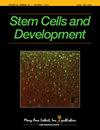Cytoplasm or supernatant-where is the treasury of the bioactive antiaging factor from mesenchymal stem cells?
IF 2.5
3区 医学
Q3 CELL & TISSUE ENGINEERING
引用次数: 1
Abstract
Cell-free compounds of mesenchymal stem cells (MSCs) could be a safer and cheaper substitution for MSC transplantation and have gained substantial research interest for antiaging skin treatments. However, whether those bioactive components should be obtained from the cytoplasm or supernatant is yet to be determined. Here, we examined the ingredients of the MSC cytoplasm extract (MSC-ex) and MSC supernatant (MSC-s) and evaluated their effect in a photoaging model. Although MSC-ex has a richer protein composition than MSC-s, the latter has a proteome associated with wound healing and blood vessel development. Over 85% of the proteins in MSC-s were also found in MSC-ex, including extracellular matrix protein and various growth factors. The results of realtime-PCR and western blot also demonstrate that both MSC-s and MSC-ex can upregulate collagen, TGF-β, and VEGF and downregulate IL-1β and matrix metalloproteinase-1(MMP-1), which were considered critical for anti-photoaging. This supports our observations in the hematoxylin and eosin (HE) and Masson staining assay that they have a comparable effect as MSCs in terms of enhancing dermal thickness, and stimulating collagen regeneration. Although MSC-s and MSC-ex showed a weaker immunosuppression effect than MSCs, moisture measurement showed that they repair damage more rapidly than MSCs. Furthermore, the histological results showed that MSC-s maintains a super effect on immunosuppression, epidermal repair and angiogenesis. That may be associated with the higher content of laminin, TGF-β and VEGF in MSC-s, as well as its super cytokine transcriptional regulation ability. Thus, both MSC-s and MSC-ex can safely and effectively promote the repair of skin light injury, similar to MSCs. Our findings can broaden the range of active factors available in cell-free treatment, determine the difference between MSC-s and MSC-ex, and provide a reference for the development of similar products in regenerative medicine.来自间充质干细胞的生物活性抗衰老因子的库在哪里?
间充质干细胞(MSC)的无细胞化合物可能是一种更安全、更便宜的MSC移植替代品,并在抗衰老皮肤治疗方面获得了巨大的研究兴趣。然而,这些生物活性成分应该从细胞质还是上清液中获得尚待确定。在此,我们检测了MSC细胞质提取物(MSC-ex)和MSC上清液(MSC-s)的成分,并在光老化模型中评估了它们的效果。尽管MSC-ex比MSC-s具有更丰富的蛋白质组成,但后者具有与伤口愈合和血管发育相关的蛋白质组。MSC-s中85%以上的蛋白质也存在于MSC-ex中,包括细胞外基质蛋白和各种生长因子。实时PCR和蛋白质印迹的结果还表明,MSC-s和MSC-ex都可以上调胶原、TGF-β和VEGF,并下调IL-1β和基质金属蛋白酶-1(MMP-1),这被认为是抗光老化的关键。这支持了我们在苏木精-伊红(HE)和Masson染色分析中的观察结果,即它们在增强真皮厚度和刺激胶原再生方面具有与MSC相当的效果。尽管MSC-s和MSC-ex显示出比MSCs弱的免疫抑制作用,但水分测量显示它们比MSCs更快地修复损伤。此外,组织学结果表明,MSC-s在免疫抑制、表皮修复和血管生成方面保持着超强的作用。这可能与MSC-s中层粘连蛋白、TGF-β和VEGF含量较高以及其超细胞因子转录调控能力有关。因此,MSC-s和MSC-ex都可以安全有效地促进皮肤光损伤的修复,类似于MSCs。我们的发现可以拓宽无细胞治疗中可用的活性因子的范围,确定MSC-s和MSC-ex之间的差异,并为再生医学中类似产品的开发提供参考。
本文章由计算机程序翻译,如有差异,请以英文原文为准。
求助全文
约1分钟内获得全文
求助全文
来源期刊

Stem cells and development
医学-细胞与组织工程
CiteScore
7.80
自引率
2.50%
发文量
69
审稿时长
3 months
期刊介绍:
Stem Cells and Development is globally recognized as the trusted source for critical, even controversial coverage of emerging hypotheses and novel findings. With a focus on stem cells of all tissue types and their potential therapeutic applications, the Journal provides clinical, basic, and translational scientists with cutting-edge research and findings.
Stem Cells and Development coverage includes:
Embryogenesis and adult counterparts of this process
Physical processes linking stem cells, primary cell function, and structural development
Hypotheses exploring the relationship between genotype and phenotype
Development of vasculature, CNS, and other germ layer development and defects
Pluripotentiality of embryonic and somatic stem cells
The role of genetic and epigenetic factors in development
 求助内容:
求助内容: 应助结果提醒方式:
应助结果提醒方式:


